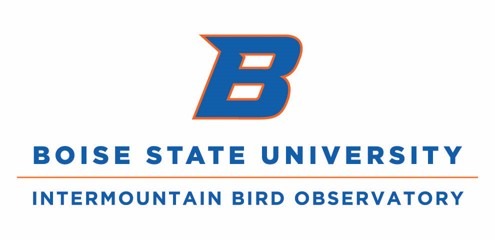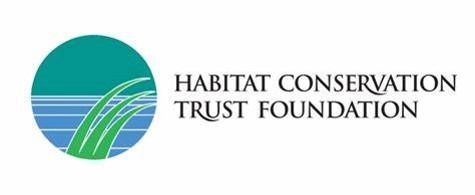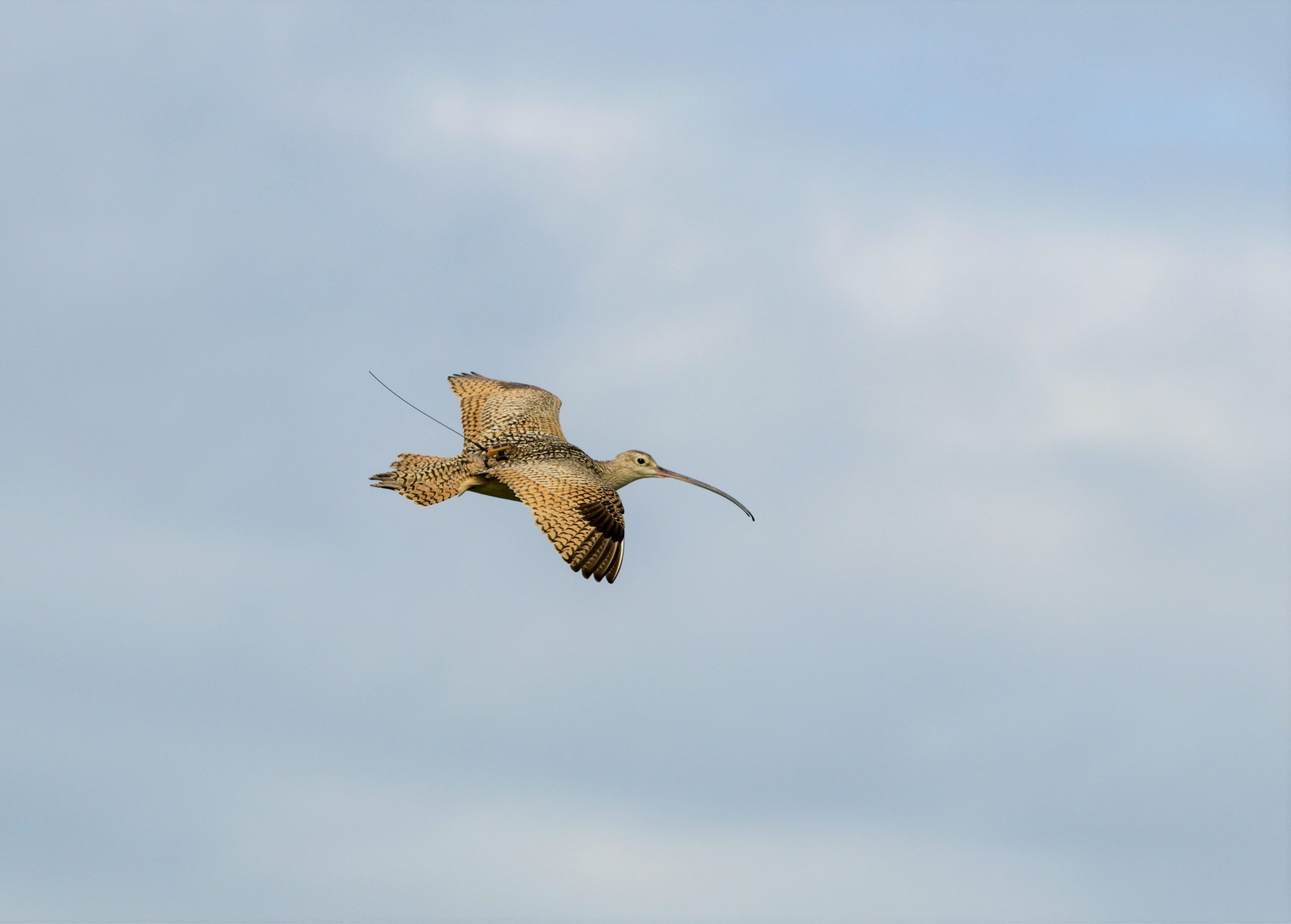Long-billed Curlew habitat use and migration
Long-billed Curlews are North America’s largest shorebird. In Canada, they breed in southern Alberta, Saskatchewan, and the interior of British Columbia. Approximately 16% of the Long-billed Curlew’s global breeding range is in Canada. The species is designated by the federal Species at Risk Act as a species of Special Concern. In British Columbia, the curlew is Blue-listed and considered Vulnerable.
Over the past 150 years, Long-billed Curlews in North America have declined and their range has become smaller, partially due to agricultural intensification. However, in B.C., the curlew’s range has been expanding across the province over that same time period. This has happened as natural grasslands and previously forested land in the province have been converted to agricultural land, which has resulted in birds breeding on cultivated land.
Our study aims to determine the relative success of curlew nests in agricultural habitats versus natural grasslands, how breeding success and timing varies across the species’ BC range, and the migratory routes and wintering destinations of BC curlews. To answer these questions, we are using a combination of methods: detailed monitoring of nesting sites, volunteer roadside surveys, landowner and farmer engagement, and satellite tracking.
With several years of satellite tracking of curlews, we now better understand the wintering locations and the migratory routes of the Long-billed Curlews that breed in the East Kootenays and the Prince George area. Most individuals take relatively direct routes to winter in the Central Valley of California (learn more here). We have now stopped most of the satellite tracking, though two birds are still being tracked with tags from our partners at the Smithsonian Institute.
Fieldwork from 2017 in the East Kootenays and 2019 in the Prince George area has helped us start making comparisons between natural and agricultural areas. We plan to continue this work to compare the nesting threats among regions where different hay harvesting practices are used. We will also continue and expand our engagement with farmers and naturalists in the interior of BC to encourage land stewardship practices that benefit curlews and get Citizen Science help to monitor and document Long-billed Curlews.
You can help!
Participate in the Long-billed Curlew Survey
Help Us Document Curlews and Participate in Citizen Science
Download Survey Instructions and Datasheets
More ways to help
We need your help to monitor Long-billed Curlew migration timing, breeding timing and success, leg flag re-sightings, and hay harvest timing. You can help in multiple ways:
- Use eBird Canada (website or mobile app) to submit sightings of Long-billed Curlews (include photos, comments, and breeding codes when possible)
- Report nesting to Project NestWatch, especially if you can observe the breeding pair several days through the summer
- Don’t approach the nest (egg number isn’t necessary), but determine nesting status from a distance (e.g. nest building, sitting on nest, fledged chicks)
- If you live near Prince George, BC, reach out to bcvolunteer_AT_birdscanada.org to help out our curlew leg flag resighting effort
- Record hay harvest dates, locations, and number of harvests and share by email to bcvolunteer AT birdscanada.org
- Please only share hay harvest information for your property, or with permission of the farmer
Learn More
Explore the Long-billed Curlew satellite tracking data from 2019-2020 – Past tracking map
Birds Canada Long-billed Curlew Articles
- BirdWatch Canada feature article from Summer 2018 – Keeping Up with the Curlews of BC’s Skookumchuck Prairie – blog post here about article and magazine issue
- August 2020 – A Curlew Conservation Community that Cares
- July 2019 – It Takes a Village to Track a Curlew
World Curlew Day Blog Posts
- 2021 – Celebrating Curlews in Canada’s West And Beyond!
- 2020 – Research Updates on Leggy Birds for World Curlew Day
- 2019 – Long-billed Curlews are Landing in BC
- 2018 – Much Ado about Curlews on World Curlew Day
Peer-reviewed Publications
- Sorenson, G.H., A.L. Hollyoake, D.W. Bradley. 2020. First confirmed nest of Long-billed Curlew (Numenius americanus) in roadside brush stubble. The Canadian Field-Naturalist. Vol. 134 no. 2. PDF
For more information contact:
David Bradley
Director, British Columbia
dbradley AT birdscanada.org
Thank you to our Partners and Supporters









